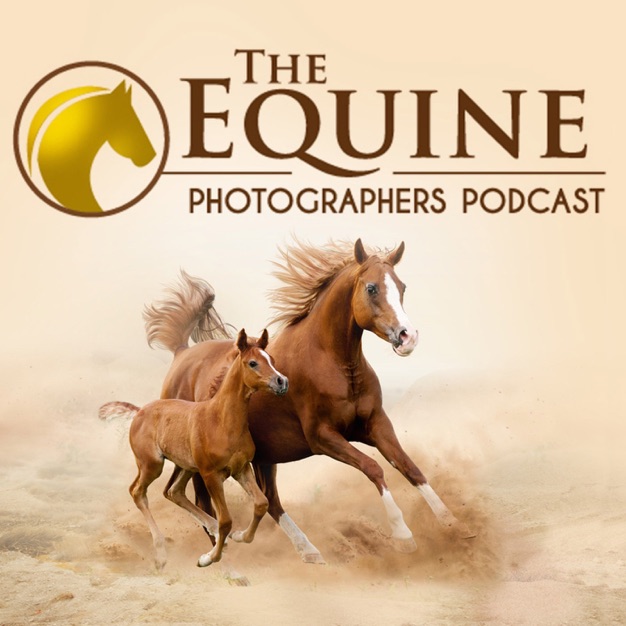
Equine Photographers Podcast
Peter DeMott • Interviews with equine photographers to discover their love for horses and how they use their cameras to show the beauty of the horse and to make a living in the niche' of equine photography
LEARN from top equine photographers from all over the world. In each podcast we ask our guest about how they got into photography and specifically how they got into horse photography?
- 45 minutes 2 seconds25: Lori McIntosh – Immersed in Photography & Horses since being a little kid – PODCAST
I love doing these podcasts
It is great fun to do these podcasts, and I hope to get more regular with them. One way to make things move along more quickly is to cut down on the amount of information that I include on the website. Going forward, I am going to share a little and some photos, but not try to tell about everything that was discussed in the podcast. You will have to listen for that.
Talking to Lori McIntosh was great fun
She grew up in a family of photographers and she loved horses and has been riding horses since being a small child. Her dad is a master photographer and he had three studios in Virginia until he retired. At 88 years old he still enjoys photography and is writing books. When Lori was ready to become a photographer he was able to connect her with some of the best photographers in the country to mentor her. She got to listen to a cruise ship full of photographers with her father when she was just starting out.
SHOW NOTES:
Growing up in a photography studio
Giving her parents a break by going to horse camp / stables
As a little girl she used to help her dad, calling clients to tell them their orders or proofs were ready to pick up. She also spent time each summer at a summer horse camp when she lived out east. Now she is located in Auburn California. In this photo from her Facebook page she explains that she was always a mischievous little girl and had burned a hole playing with matches in this dress which her father had brought home from a trip to Mexico. Even with the hole, she loved this dress and wore it out wearing it. She speculated that her parents loved the opportunity of sending her to horse camp every year.

Website: http://www.lorimcintoshphotography.com
Facebook: https://www.facebook.com/LoriMcIntoshPhotography/
Pinterest: https://www.pinterest.com/lorimc26/?eq=lori%20main&etslf=10566
Email: Lori@Lorimcphoto.com


Lori still rides today and participates in Endurance riding and has ridden the Tevis in California, one of the oldest point to point 100 mile Endurance events in the country. As she speaks about her equine competitive partners, you can hear how much she bonds and loves her horses.

Some of Lori’s work:




SUBSCRIBE, Rate and Review: The Equine Photographers Podcast
We also encourage your to SUBSCRIBE on iTunes so you never miss an episode. This is also where you can leave a RATING or COMMENT about the episode or the podcast. More comments and ratings helps others find our podcast on iTunes. If you enjoyed the podcast consider leaving a rating and review: Subscribe on iTunes Click HERE
Also, please use the SHARE buttons at the bottom of the page to share The Equine Photographers Podcast with other equine photographers that you may know.
The post 25: Lori McIntosh – Immersed in Photography & Horses since being a little kid – PODCAST appeared first on Equine Photographers Podcast.
22 April 2017, 8:55 pm - 30 minutes 53 seconds24 : Pam Gabriel – Teacher, horse rangler & photographer – PODCAST
Starting back up after a pause in the podcast
I hope to get onto a schedule again after a hiatus from the podcast. Hopefully everyone who has subscribed will get this new episode. Please share it and spread the news that there are going to be new episodes. I have to admit that I had a bit of a cold and that I am a bit out of practice and I jumped in without even introducing Pam. Please know that I will be trying to get back in the swing of things with interviews with people like Pam Gabriel and other photographers you admire. Thanks, Peter
I’ve enjoyed Pams work for some time and it was a pleasure to here about her journey with horses and photography.
Pam Gabriel Photography
Pam has made a point to keep horses in her life, making choices along the way to learn and grow in her knowledge and abilities working with horse adding photography as another way to stay connected to her community and to horse people and their horses. She was born with a horse bug and they have always been a love of her’s.
Website: http://www.pamgabrielphotography.com
Facebook Page: https://www.facebook.com/pg/pamgabrielphotography
Facebook Profile: https://www.facebook.com/pam.kippergabriel
Pinterest: https://www.pinterest.com/kippergabriel/

SHOW NOTES:
Pam’s story with horses
We started out with Pam’s story with horses. Although she said she didn’t grow up with horses, it seemed to me that horses have been a big part of her life since a pretty young age and that she decided to make horses a part of her life throughout her life. After going to college majoring in art, she stopped college and went to be with horses. She wanted to see what it was like to be in the horse business. Equilibrium Horse Center was her first opportunity. She explains her journey up to now.
Pam’s start with photography
She started with photography when she was at a horse camp. Her parents gave her 4-5 rolls of film and a camera to record her experience , but when she came back only one roll had her friends and acquaintances from the camp while the other four rolls were her pictures of her new equine friends, I mean horses that is.

She started her business 7-8 years ago with Pam Kipper Photography, then got married and changed that to Pam Gabriel Photography. There are probably some pictures still floating around with Pam Kipper Photography, but mostly it has been the new name.

She still has a horse that she raised from a weanling. He is 17 years old now. She hopes to get a portrait of her with her horse some time before something happens to him.
She also loves dogs and lots of horse people have dogs, then she knew kids at the barn and that led to shooting seniors (high school grads in their last year).


One day when I’m no longer teaching, then photography will be something that I can keep doing.
We discussed her pricing and how she views things.

We discussed marketing and how she gets the word out about her photography. In the slow months, winter in Minnesota, she shares pictures that she has taken some time back. She looks over the pictures from Sombrero Ranch shoot with EPNET and re-edits those and shares them to keep her self out there. She thought she did maybe 20 seniors this past year. Horses are spring summer and fall. She wants to do more with dogs. She can do those in the winter in her living room with studio lights inviting friends to bring their dogs for a day of shooting.

SUBSCRIBE, Rate and Review: The Equine Photographers Podcast
We also encourage your to SUBSCRIBE on iTunes so you never miss an episode. This is also where you can leave a RATING or COMMENT about the episode or the podcast. More comments and ratings helps others find our podcast on iTunes. If you enjoyed the podcast consider leaving a rating and review: Subscribe on iTunes Click HERE
Also, please use the SHARE buttons at the bottom of the page to share The Equine Photographers Podcast with other equine photographers that you may know.
The post 24 : Pam Gabriel – Teacher, horse rangler & photographer – PODCAST appeared first on Equine Photographers Podcast.
11 February 2017, 3:51 am - 39 minutes 20 seconds23 : Matt Cohen – West Coast Rodeo & Sports Photographer – PODCAST
Thanks Kirstie Marie for a great introduction for Matt Cohen.
Matt Cohen Rodeo Photography
Website: http://www.mattcohenphoto.com
Blog: http://www.mattcohenphoto.com/blog/
Flickr: https://www.flickr.com/photos/1115/
Twitter: https://twitter.com/mattcohenphoto
Instagram: https://www.instagram.com/mattcohenphoto/
Facebook: https://www.facebook.com/jmatthewcohen

Cody Snow, Red Bluff 2016
SHOW NOTES:
Matt describes himself as a city boy. He didn’t really have any exposure to horses at all until he was sent by a local paper to cover a rodeo for one evening. He started his career as a photographer shooting high school sports for several local papers. On that first night at the rodeo, he decided to come back for all three days of the event and was hooked.
With high school sports you are just shooting one thing. For example with football, you have about 10 minutes of shooting time spread out over an hour. But, with rodeo you have constant action and there are 4-5 completely different events to shoot. Each event although it involves horses is completely different from the other. This is how Matt describes what intrigued him with rodeo shooting.

Bobby Marriott / 926 Sundown of Flying U, Reno 2016
The other thing that makes it a whole lot more fun is that you can get right in there. Between events you can chat with the riders and you have access. With other professional sports you are nowhere near the participants. Even when you are on the side lines, you are 10 to 20 feet from the players. You certainly are not allowed on the field.
Everything has horses. Even with the bull riding there are the pick up riders that go in to rope the bulls and get them back in the pens.
Social media
Matt is on pretty much everything. When he started, he just figured he would put the best pictures out there and figure out how to make some money with it. Facebook seemed to be the key to that as riders were tagged, then their sponsors would see the images and I would make connections with them for additional work.
He has 56,000 followers on Instagram, but it does not lead to a lot of business for him. He tends to spend more time on Instagram because he likes the format better. You see more images on Instagram and less “other stuff”. But, Facebook has been the social media that has performed in terms of helping him make the connections.
Making money in Rodeo Photography
He does not use the old model of shooting with the hopes of the riders wanting images of their rides. He works directly with the rider sponsors and only does a very little bit of selling to riders. Sponsors are looking for outstanding images for promotional purposes. Autograph prints, trailer wraps, bill boards, and other promotional materials. He does nothing on spec. He won’t travel great distances to a rodeo unless he knows that he has several sponsored riders at that event and the pictures are already spoken for.
He questions whether the old model is very workable any more. The better riders have been there and done that already and they don’t buy 8 x 10s.
It took him a long time to get to where he is today. As editorial diminished, he moved more and more of his business to commercial. It used to be that Sport Illustrated, a cover for example or a two page spread, was a real payday. Now instead of a couple thousand dollars, you are looking at a couple hundred bucks. Now they have laid off all their photographers and they get whatever pictures they can find. Matt said he has seen covers that were out of focus. It’s sad, he said, when he first started there was more in editorial.

Blake Hirdes, Marysville 2016
Why a great shot is important
Matt explains that in editorial, you are a cost to them. They look for the cheapest solution to their need that they can find. Advertisers, however, need the best possible images and are willing to pay to get those. Getting as close to the end-user, the people who are selling products, is where the you can make a living.

JR Vezain / 631 Lil Josey of Flying U, Reno 2016
A sponsor might have 15 guys that ride for them. Another might have three. Each contract is tailored to their needs. He is basically on a retainer with these sponsors and this is what funds his income, his travels, his equipment, hotels and so on.
NO FREE PICTURES warning on his website
Before someone can click on the contact photographer form, they have to agree that they are NOT GOING TO CALL FOR A FREE IMAGE. This is a waste of time and spending 20 minutes explaining that he is a professional photographer and he gets paid for his work. If someone still calls him and asks for FREE IMAGES for their small publication or whatever they want it for, Matt will tweet out that such and such publication asked for free image and embarrass them. He has a bit of a reputation.
He explains that getting a tag line for free images does nothing for you as a photographer. Negotiating from FREE is very difficult to do.

Sarah Rose McDonald, Clovis 2016
He shoots rodeo March through September. In the winter he shoots other sports. He spends more time working on his rodeo image sales than he does on the other sports. There is much more action to shoot in rodeo so he spends more time on the images as well.
Big Lens Fast Shutter Podcast
Him and a partner help people learn sports photography. He has been working on that for about 5 years. He enjoys helping others to improve their work which is gratifying and there is some income stream from it.
SUBSCRIBE, Rate and Review: The Equine Photographers Podcast
We also encourage your to SUBSCRIBE on iTunes so you never miss an episode. This is also where you can leave a RATING or COMMENT about the episode or the podcast. More comments and ratings helps others find our podcast on iTunes. If you enjoyed the podcast consider leaving a rating and review: Subscribe on iTunes Click HERE
Also, please use the SHARE buttons at the bottom of the page to share The Equine Photographers Podcast with other equine photographers that you may know.
The post 23 : Matt Cohen – West Coast Rodeo & Sports Photographer – PODCAST appeared first on Equine Photographers Podcast.
27 July 2016, 12:30 am - 30 minutes 11 seconds22 : Shawn Hamilton – Editorial and Stock Equine Photographer
In a changing market with changes in photography and changes in the economy their have been publications that have ceased to exist and others have cut back on photography budgets. Stock photography has also changed over the years. Throughout all this change, Shawn Hamilton has been able to run a successful editorial, commercial and stock photography business focused exclusively on equine photography.
My wife an I have been to the Rolex Three Day Event at the Kentucky Horse Park in Lexington Kentucky for the cross-country jumping portion of the event many times over the past many years. One year I had the pleasure of introducing myself to Shawn as she photographed at the water jumps. She had a very large lens which I think was a 300mm prime lens. I’m not sure where this picture (below) was taken, but this is pretty much how I remember her on that day 4 or 5 years ago. For me it is just a 2 hour drive from Dayton, Ohio, however Shawn comes from Canada to shoot the event each year rain or shine.

But, as the interview progresses, you’ll hear from Shawn how she morphs her business to meet the needs of the day and now may also create some offerings that give her a chance to “give back”.

Website: http://clixphoto.com
Facebook Page: https://www.facebook.com/CLiXphotocom
Email: clixphoto7@gmail.com



SHOW NOTES:
As with every episode we start out talking about the origins of interest in both photography and especially horses.
She got her first 35mm camera from a rich ante when she was about 10 years old. She started riding lessons when her mom traded fabric for riding lessons.
She started her business in the mid 80s. She picked up The Photographers Market and entered all the magazines she had an interest in into a data base. She was working with a data base management company at the time. After a pregnancy leave of several months when she came back to work she realized that she wanted to go full-time with photography, so she quite her job and dove in.
It took about a year of shooting horse shows and three-day events before she would say that she was actually making money as a business. She started out as a show photographer.
In order to make it as an editorial and commercial equine photographer in Canada, you must have clients in the USA.
With the down turn in the economy she went back to school to learn more about writing and she has refocused on travel photography and writing, but still focused on equine vacation opportunities.
National Geographic Traveller Magazine UK version
Her recent accolade was her photography in National Geographic Traveller Magazine UK version. Shawn had taken a 7 day trip crossing the Andes Mountains from Chile to Argentina. A National Geographic writer had taken the same trip, but the photographer she had did not work out for whatever reason and they were able to use Shawn’s photography instead. It’s been in the works for some time and was just published recently. She is still looking for a copy of the magazine.

30 years photographing the Rolex Three Day Event
She has only missed two over those thirty years. Once because she was pregnant and another because she was living overseas. It used to be as an assignment photographer for several publications, but now she does the photography there for stock. She still shoots for several clients, but not like she used to. There are so many photographers at the event these days so the competition and the availability of good images is much greater. In any case Canada is still gray from winter and coming down to the Rolex where it is already spring, inspires her and gets her stock photography
Fine Art Equine Photography
Fine art is something that she has been working on for a year or so. We discussed pricing a little bit.
How to Photograph Your Horse
She was invited to do a presentation at an event. She presented about how to photography your horse. Afterwards, she had people coming up to her booth with lots of questions and asking if she would do a workshop. She scheduled a teaching workshop about how to photograph three day events. That is happening in mid June 2016. She is ready to give back and feels that this will be a great opportunity to do so.
A Book About Horse Back Riding Vacations
If she writes a book, the name will be “From the Saddle” because she does a lot of her travel photography from the saddle of the horse. We discuss how to have cameras while riding a horse. She has Lowe Pro bags and belt attachments for the cameras and lenses.
The HOW-to of Editorial and stock photography
Find magazines that resonate with you as a photographer. Send emails to the photo editors or call them on the phone to get an idea of what new types of work they are looking for. Go to the media center of the events.
Don’t be afraid of the phone. Don’t be afraid to talk at the events with publications and show them some of what you have.
She works with “want lists” and sends out emails with links to her images. She discusses where her income comes from today. It comes from stock, editorial, fine art, travel photography, and now perhaps workshops.

The below photo is from her website and the list goes on and on.
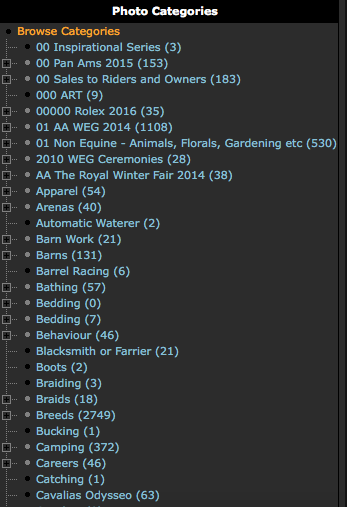
SUBSCRIBE, Rate and Review: The Equine Photographers Podcast
We also encourage your to SUBSCRIBE on iTunes so you never miss an episode. This is also where you can leave a RATING or COMMENT about the episode or the podcast. More comments and ratings helps others find our podcast on iTunes. If you enjoyed the podcast consider leaving a rating and review: Subscribe on iTunes Click HERE
Also, please use the SHARE buttons at the bottom of the page to share The Equine Photographers Podcast with other equine photographers that you may know.
The post 22 : Shawn Hamilton – Editorial and Stock Equine Photographer appeared first on Equine Photographers Podcast.
15 June 2016, 8:08 pm - 58 minutes 20 seconds21 : Christina Scalera – Legal issues for creatives & equine photographers – PODCAST
Where to Find Christina:
- Instagram: http://instagram.com/christinascalera
- Twitter: http://twitter.com/creativeatlaw
- Facebook: http://facebook.com/christinascalera
- Website: http://christinascalera.com
- Email: hello@christinascalera.com
- Periscope: @cscalera
- You can ask Christina questions here: http://www.christinascalera.com/contact1
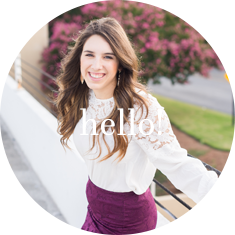
- Photo by Shelby Rae Photographs
Christina is an attorney based in Atlanta GA.
If you’ve ever complained that you love what you do but HATE the business side of things, you’re in the right spot. Christina’s mission as a lawyer for creative entrepreneurs is to help them fulfill their life’s work by creating beautiful businesses from the inside out. She provides the creative world with accessible, affordable legal solutions. Whether you need a last-minute contract template that covers your butt, a painless trademark registration or want to learn more to empower yourself to run your business well, legally speaking, Christina has you covered.
SHOW NOTES:
Christina has been a show rider for many years.
She loves horses and horse people since she has competed with her arab horse for 19 years.
Disclaimer: This is general information and does not constitute legal advice.
Here is her official disclaimer from her website:
THE CONTENT ON THIS WEBSITE IS PROVIDED FOR INFORMATIONAL PURPOSES ONLY. THIS INFORMATION DOES NOT CONSTITUTE LEGAL ADVICE AND DOES NOT ESTABLISH AN ATTORNEY-CLIENT RELATIONSHIP. CHRISTINA IS LICENSED TO PRACTICE LAW IN GEORGIA AND FILE FEDERAL TRADEMARK AND COPYRIGHT REGISTRATIONS FOR CREATIVES ANYWHERE IN THE UNITED STATES. SHOULD YOU NEED LEGAL ADVICE FOR MATTERS THAT DO NOT CONCERN GEORGIA LAW, PLEASE SEEK OUT A LICENSED ATTORNEY. SOME STATES MAY CONSIDER THIS CONTENT ATTORNEY ADVERTISING.
How do you get legal advice? What does it mean to “retain” an attorney?
What does it mean to “retain” an attorney? How do you get a consultation from an attorney? When calling attorneys look for an attorney that is a “good fit” for you and for your particular needs. For example, a family law attorney may not be helpful to you about setting up your business and registering your images or if you had problems with regard to intellectual property rights.
Contracts – When and why do you need a contract?
Whenever you are forming a relationship with a person or company, it is appropriate to have a contract describing your relationship. Christina explains that many people do not realize that when someone presents you with a contract, that it can be changed. In fact you need to make changes to make the contract agree with what your relationship will be before you sign it. Don’t think of it as something fixed and not changeable. If you don’t feel comfortable with something, you should change it. Then it is something to negotiate with the other person or company so that it correctly describes the relationship your are joining into.
It can also help to define the give-and-take of your relationship with your client. Today contracts are moving toward more common language rather than complicated legalese that is difficult for everyone to understand. You want your agreements and customer education to be easy to understand so that everyone has the same expectation if something should go wrong. If you have it in plain English, then it becomes an effective educational and communication too for you and your client. If you cannot understand something, you should not sign it.
Tort Law, indemnification clauses, waiver of liability, and release from liability clauses in agreements
You cannot make people sign away their rights to take you to court. But, you can negate the risk of being sued for activities that involve “inherent risk”. You and your client need to be cognizant to the fact that a horse can be unpredictable. You should involve everyone present or participating with the horse/s, not just the horse owner. Everyone there should know that there are inherent risks in what they are doing and if something goes wrong, it is not your responsibility as a professional because they knew going in that there was risk involved. However, if you do things that are obviously negligent, you may invite legal action even if an liability clause is signed.
“Statutory language” or quoting of individual state laws can be added to your agreements. This may be different in each state and there are 36 states that have laws about farm animals and professionals regarding the inherent risks associated with being around horses.
You cannot protect yourself from being sued for negligent behavior
At this point we discuss what might be an example of negligent behavior and the importance of having good communication with your clients. As an equine photographer it would be wise to have knowledge of horse behaviors and cues that horses give before going out with horses in order to help prevent dangerous situations. What are the basics of horse behavior? You can be unique and creative with your photography without being dangerous. Around horses, you and your client are at your own risk in many states.
Common language in your contracts and making it easy for your clients
Putting your contracts online can make your paperwork less intimidating. So can the use of common language that is clear and precise.
Clients can sign agreements online, they just scroll through the information so that it does not seem so long. Rather than the tedious process of sending a PDF of your contract and requiring your client to sign it, then scan it and send it back. Christina likes to use online document services to simplify client contract relationships.
She points out that you will need use this type of technology going forward, especially with younger audiences (Millennials) age 30 or younger. They just won’t sign things if it requires too much effort. Streamlining through an online service also makes you look more professional and can be extremely helpful for both you and your client. Here are the two services that she mentions and recommends using.
LINK: Honeybook.com
LINK: Docusign.com
She mentions separating client education from contracts. She recommends that you have educational materials for your clients, but some of this should not be in your contract. For example you would not want to be able to take someone to court because they brought two changes of clothing instead of three. Choice of clothing is more of an educational point than something that has to be legally binding.
Stealing of images, Copyright law
What to do when someone takes your images without your permission. Photographer credit does not clear you from taking someone’s image without permission.
You can register your copyright for an image AFTER you discover that it was taken and published without your permission. You have 90 days from when you “should have known” it was being used. We have a discussion of registration in batches. If you find a possible infringement that you feel is worth pursuing, it can be helpful to register that specific image again with an individual registration.
You own the copyright to your images at the point at which it is taken by you and fixed into a permanent form such as clicking your shutter button and recording the image on film or onto digital media.
Only the courts can decide if there is an “actual infringement” of your image (this is a legal term that should not be used too loosely. As an attorney, she refers to “alleged infringements” as the judge has to make the final determination).
I explain using a “license to use contract” and why this is correct terminology when people “buy” your images. Clarity is important and there can be many misunderstandings about what is being purchased if you are not clear with your licensing agreements. For example if a client want to buy an 8×10 what does that mean? Actually, they are purchasing the rights to one personal display of that image as an 8×10 print. They have not purchased the copyrights of the image to use however they choose unless you sell those to them. In most cases there should be limitations written into your agreements. One great thing to include for example is,” No license to use this image is granted until payment in full is received for the usage described.”
What to do when someone steals from you
Don’t send an email when you are flaming mad at someone. Christina discusses what you can do. What is the difference between infringement and willful infringement? When might it be worth retaining an attorney regarding stolen or images used without your permission? If you retain an attorney, generally you would want to be able to recapture to attorney costs in your recovery, so typically, if an individual steals your image and places it on their facebook page, it may not be worth involving an attorney. However there are other things that can happen.
The Digital Millennial Copyright Act
We discuss DMCA Take down and what that means. The Digital Millennial Copyright Act notice makes it so your can have your images removed from people’s websites and Facebook pages if the image is stolen from you or used without your permission. They sometimes will take down an entire Facebook account or website, or they may just take down a few images. But, you also want to suggest they make payment for the image because this is your business. Being calm and firm when talking with people is more effective generally speaking than coming down on someone with all your anger. But, even without an attorney, your request to either remove the image or pay for it can have teeth because of the DMCA.
World wide issues – Work for hire – Intellectual Property
This podcast is NOT focusing on international copyright law and this does not constitute legal advice.
When to have a Model Release question is discussed here
Be open and transparent with your clients. You would not want to trick someone into creating images to use in ways they might not want. Nobody should ever be surprised to find their image used somewhere. There are many things to consider with regards to privacy law. You may make some mistakes in your business. Learning from your mistakes is part of the cost of doing business. If you are a photographer, she explains that she does not want you to be afraid of taking pictures.
Christina has something for you:
Get your free “contract check list” by texting 44222 with the message 16legal in the USA
She also has some ready-made turn-key contracts for equine photographers which are available for purchase. You do not need to retain her professional services in order to purchase the contract template for equine photographers.
You will typically contract with an attorney in order to get actual legal advice. Most attorneys will provide for a free legal consultation, but will not or should not give legal advice to someone without being retained by them.
Email questions if you would like. She doesn’t guarantee that she will answer every question, but you are welcome to send them and she will reply.
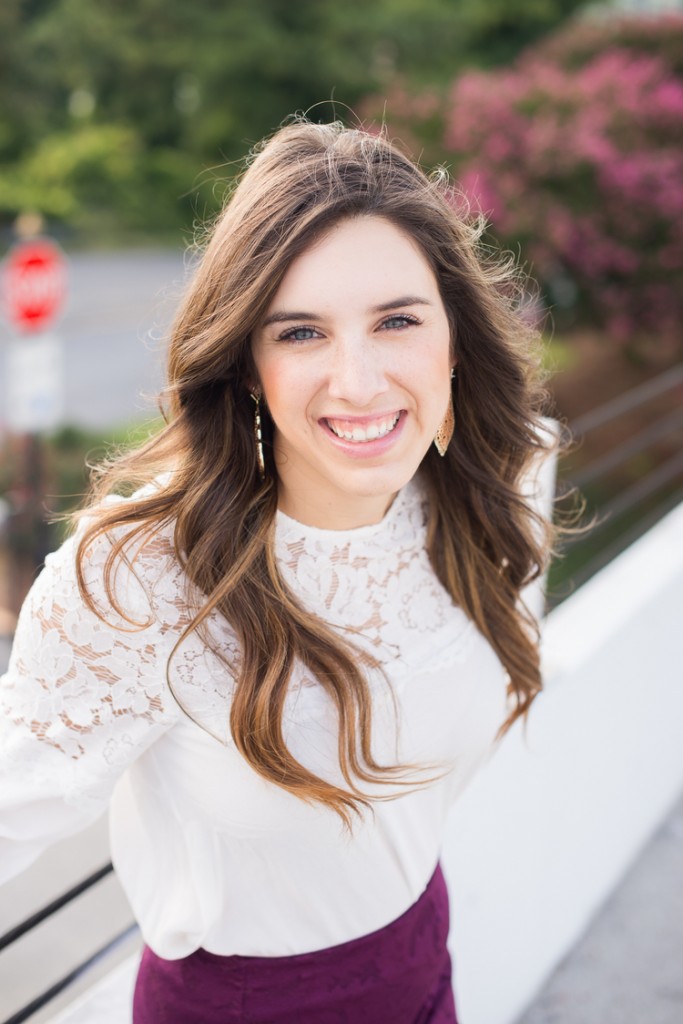
Photograph by Shelby Rae photographs
SUBSCRIBE, Rate and Review: The Equine Photographers Podcast
We also encourage your to SUBSCRIBE on iTunes so you never miss an episode. This is also where you can leave a RATING or COMMENT about the episode or the podcast. More comments and ratings helps others find our podcast on iTunes. If you enjoyed the podcast consider leaving a rating and review: Subscribe on iTunes Click HERE
Also, please use the SHARE buttons at the bottom of the page to share The Equine Photographers Podcast with other equine photographers that you may know.
The post 21 : Christina Scalera – Legal issues for creatives & equine photographers – PODCAST appeared first on Equine Photographers Podcast.
23 May 2016, 8:41 pm - 46 minutes 54 seconds20 : Andrew & Stacy Ryback – Hunter/Jumper show photography & portraits – PODCAST

One big family
It is interesting interviewing show photographers and finding that one thing they love about what they do is getting to know the riders as friends over time. Andrew and Stacy do this to the nth degree and hire people who will continue with their sales philosophy and the feeling of family in their business. It sounds like they have a blast shooting and selling their photography at these shows. I would love to spend the day with them and just watch how the customer experience works.
The camera came first for Andrew
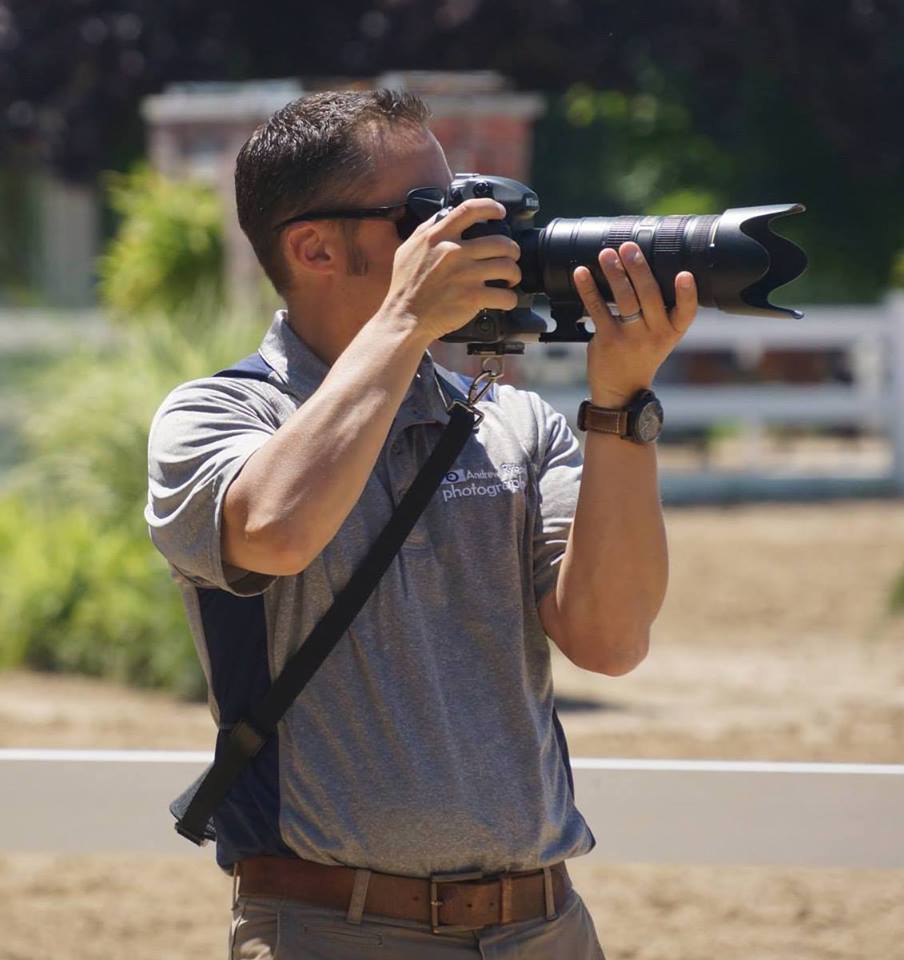
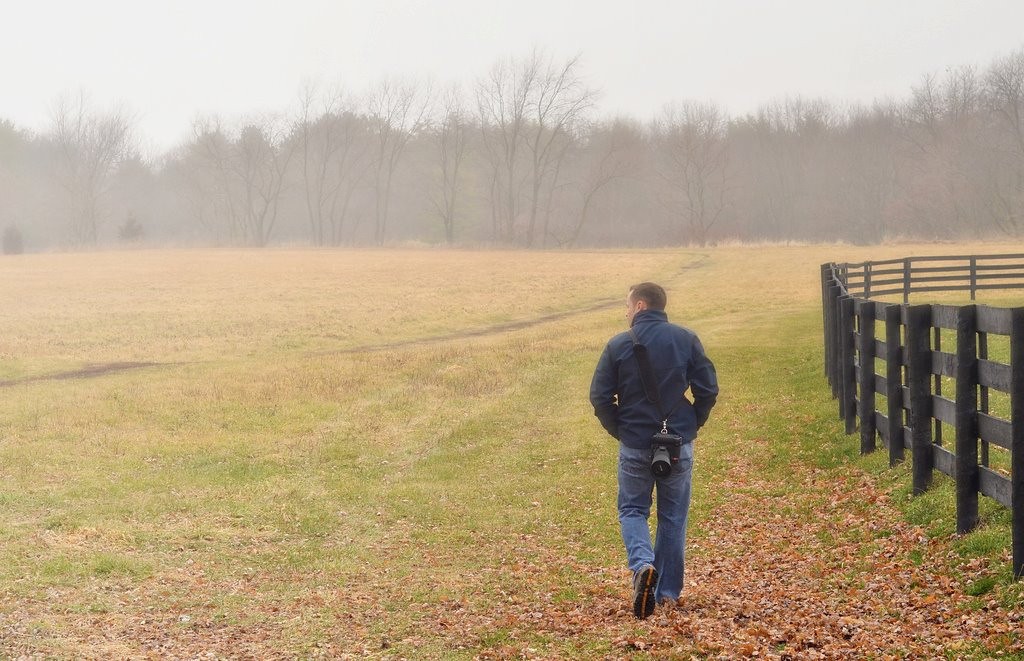
Andrew grew up around professional and avid amateur photographers so for him photography came first before the horse. He was very active with photography through college but lost interest for a while as he learned his new career after college. For several years he worked at Disney World, a perfect place to learn about customer experience and customer satisfaction.
For Stacy the horse came first as long as she can remember
Stacy grew up with horses and in competition and still competes with her own horse. She knows the joy of owning her horse and the excitement of hunter/jumper competition first hand. She participates in upper level competition in the sport and has connections both as a participant for many years and now as a part of Andrew Ryback Photography.
For Andrew, dating a young lady with a horse (Stacy, that is) led to photographing her in her hunter/jumper activities. As her boyfriend and then as her husband Andrew followed her to her shows and brought his digital camera to fill the time and photograph her events.
Continuing to photograph his wife and sometimes other friends at the shows Andrew was invited to take some pictures by show managers. He did two shows for two years before things started to grow quite quickly.
He started as a weekend part-time business in show photography, but it soon became apparent that he could go full-time with this. Both Andrew and Stacy find this entrepreneurial adventure to be fun as a couple. Now he is full-time photography and is doing about 50-60 shows each year.
Understanding customer experience and customer service
Stacy’s family background included some entrepreneurs so she understands customer experience and she does a lot at the sales end of the business. She maintains her corporate job and helps out with management of the business and the employees as well as running the sales office at the shows when she can. Her vacation time is spent either participating in hunter/jumper competition and/or making the sales end of the business run smooth as silk.
Join me now in my interview with Andrew and Stacy of Andrew Ryback Photography
SHOW NOTES
Instagram: https://www.instagram.com/andrewrybackphotography
Website: http://www.andrewryback.com
Facebook: https://www.facebook.com/Andrew-Ryback-Photography-158188154858/
We started out asking about which came first, as I do with each of these podcasts. Andrew shared his story and Stacy shared her’s. He started with the camera from way back and Stacy started with horses from way back.
As we start talking about the business they discussed finding the right kids to hire who love photography and horses. Andrew has a team of photographers that make it possible to take on the shows that have multiple arenas. His wife, his dad and other teens and college students make up their team. It sounds like perhaps it is a lot of work to keep things organized for each show.
Camera Settings and exposure
Click on video button on this photo:
A video posted by Andrew Ryback Photography (@andrewrybackphotography) on Mar 19, 2016 at 8:32am PDT
Andrew and his staff of photographers use only available light for both indoor and outdoor venues. They don’t want to chance causing a fall because of a spooked horse at a show. If the light is very bad for an indoor venue, Andrew sometimes shoots RAW. He likes f4 as a general rule, and a minimum shutter speed of 1/500th. Depending on the venue he has to push the ISO very high in some situations. His newest camera (he thanks Stacy for letting him invest in this particular new gear) has great ISO capability. He has experimented with 25,000 ISO with surprisingly good results. Although 6400 ISO can usually work. His newest camera can do far higher with NO NOISE.
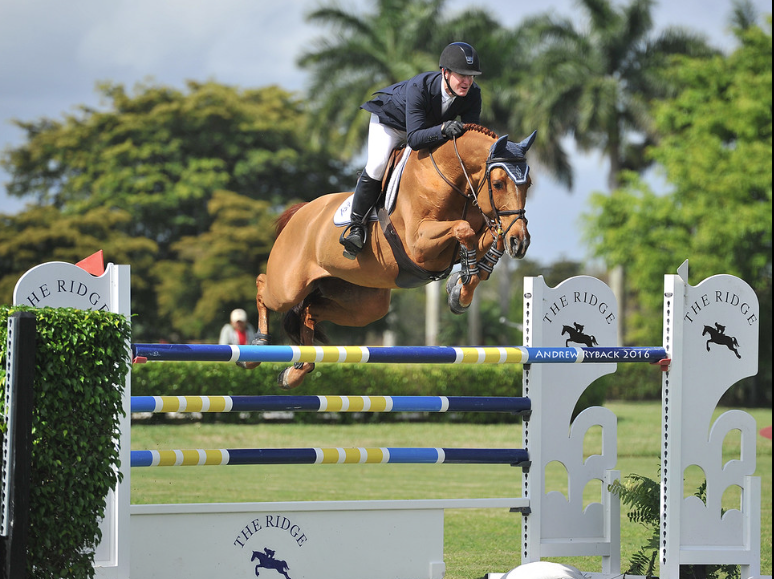
The outdoor venues are where he needs additional photographers. At outdoor events there are many times multiple rings going at one time. Andrew has 70-200MM f2.8 lenses on his cameras and communicates with his photographers, who are mostly college aged or even High School aged, by text messaging on cell phones during shows. If the lighting suddenly changes, he might text everyone to bump up the shutter speed a notch or what ever might be needed. The card runner makes sure that the photographers have what they need throughout the day.
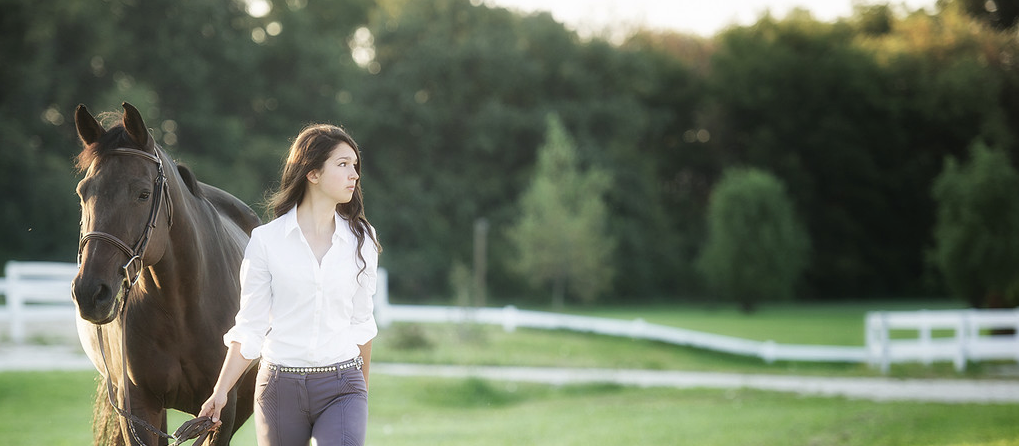
Getting to know your clients makes them have a nice warm wonderful experience and both Andrew and Stacy have backgrounds that make this just what they do
At the shows, he has some directional signage, but really word of mouth gets people in to check on their images. They recently purchased and renovated an old Airstream mobile home trailer. With the unusual shiny aluminum trailer it becomes very easy for people find them and see and purchase their competition images. Word of the shinny trailer and the great images moves quickly through the participants at the events.
No online images from the shows
“We prefer for them to have the in-the-moment experience with the images.”
Andrew and Stacy do not put show pictures online. “We prefer for them to have the in-the-moment experience with the images.” It started out that Stacy was the only one in the trailer or hut and running cards to get images onto the computers, but now they have more help. To keep good customer experience they have employed people who are horse owners who understand the joy of competitive showing and others who love photography. They hire people with talent and the right attitude about why they are there. It sounds like quite adventure and great job for the people who work for them.
What does a typical hunter/jumper show look like?
Stacy explains that at a show series they do can have from 800-1000 horses and riders participating in a week. For the smaller local shows, they might be dealing with 80-100 horses for a much shorter period of time. Stacy describes the trailer and what the riders see when they walk into the trailer. The laptops set up for the participants have folders ready for them with all the pictures from their rides. They walk them through selecting images and explain various options and the popular all inclusive whole week digital package at a price point.
They mention a Go PRO product, but we forgot to follow-up on it in the interview. Go to the PS below to read more about this product that is becoming quite popular with riders.
Andrew explains that he wants his images to be seen and enjoyed
Most popular is the full digital package for riders which is a USB drive of ALL the digital images of that rider during that event or that week of rides. For multi-week shows, they have to buy a USB for each distinct week. They set the pricing up so that if you want to buy two or three or four digital files, that it just makes sense to buy the digital package. Andrew explains that he wants the pictures to be seen and enjoyed by the participants, but they also sell individual prints and other photographic products as well.
Lately, they have sold more canvas prints, as well as cute model horse jumps where a print fits into the stand and other unique products. They like to switch things up from time to time so that the riders always have something new to look at and consider when they come to look at their images.
The USB prices are mentioned in the podcast. Pricing for individual digital files is high enough that after purchasing 2-3-4 digital files, it just makes sense to purchase the entire “All images USB” package for the week.
When not shooting shows, Andrew also does senior portraits, horse portraits, pets, barn calls etc. A popular item lately is something they call mini-sessions “black-out portraits” of horses, which can be done both at the shows and at barn calls. Oftentimes, these mini-sessions can be scheduled at shows in between events to take advantage of the horse already being braided. These mini sessions, unlike full portrait sessions, include a beautiful “black-out” barn door session fee and a canvas image as the final product. They bundle the session fee with a canvas for these making it well worth the extra effort to work into the schedule of the day.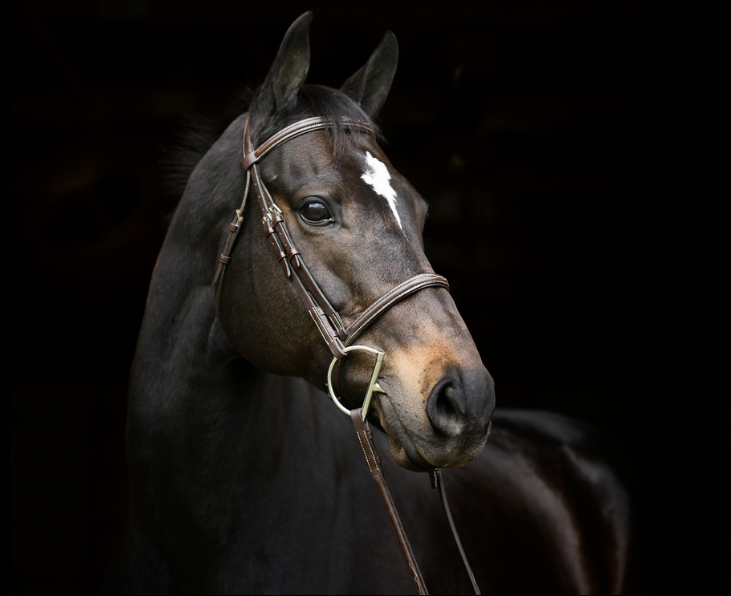
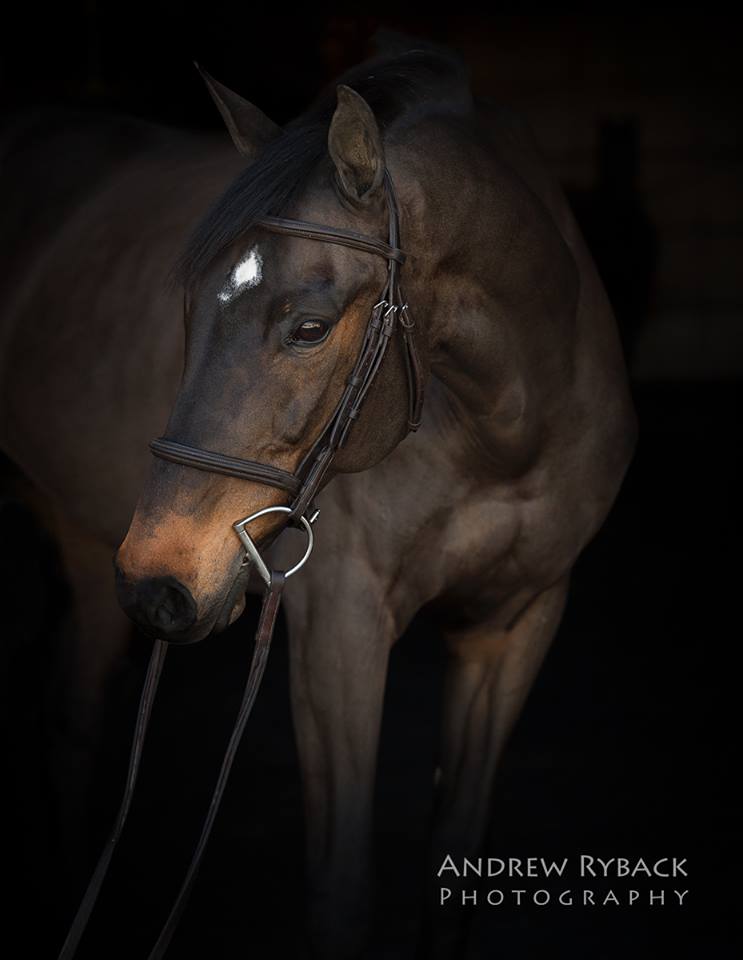
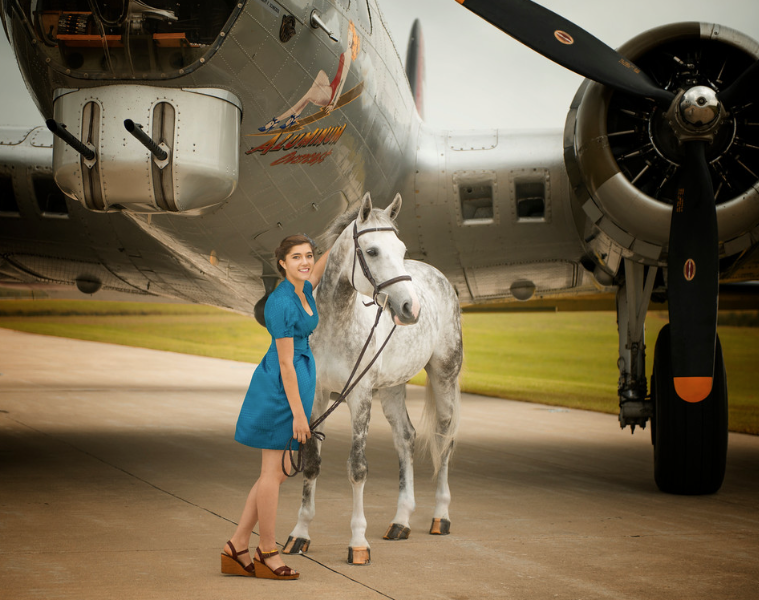
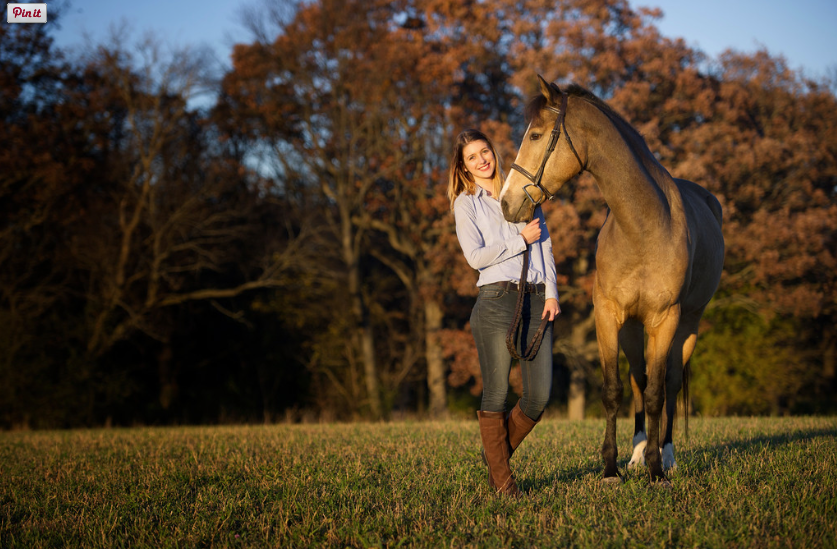
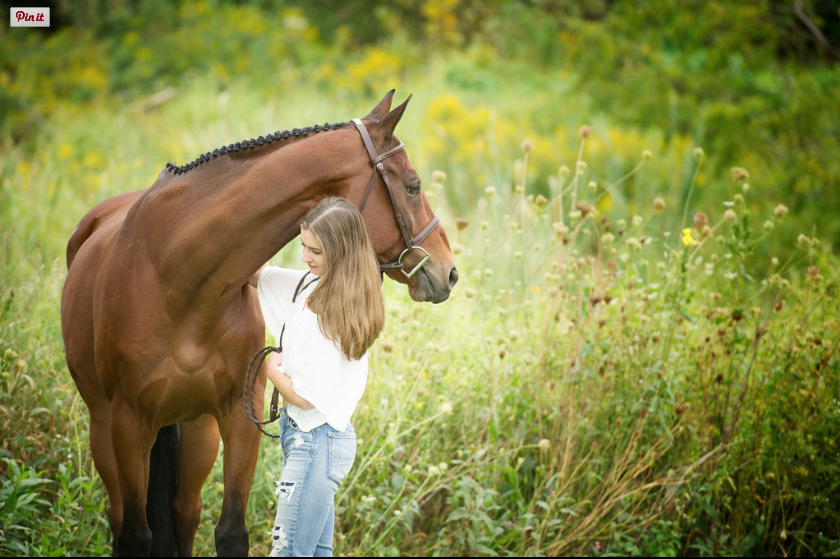
The USB drives are culled for bad timed images, but they make sure that the exposure and color are good on everything from the camera.
Fun new products
Stacy explains that she introduced custom pillow pictures which are becoming very popular. Andrew thought there would be no pillows sold, but Stacy knew it would be a hit and it is. Every little girl (or girl at heart) needs a pillow with their favorite horse to cuddle up to at home.
What makes this a great business for both of them? Why do they LOVE doing this business?
Andrew and Stacy talk about the joys of this business. He talks about being an artist, a photographer and a friend to his customers. He thanked his wife Stacy for bringing him into this business.
Stacy explains what she enjoys. It is extremely rewarding to see little girls grow up and working their way up to grand prix events. Our customers are always so excited to see us. The joy we get to have with this very large extension of our family with both our customers and our employees as well is wonderful, says Stacy.
P.S. What is the new GoPro product that is becoming very popular?
Andrew explains: Hi Peter – the gopro images are stills that are fired off with a remote. I decided on the gopro as they’re much less expensive than a dslr and superwide and are more weather proof (I had one get knocked into a water jump once) and if one gets destroyed by a horse, then it’s much easier to swallow than a full camera. Plus, the resolution is incredible – but the battery life is a pain. I’ve attached an example for you.
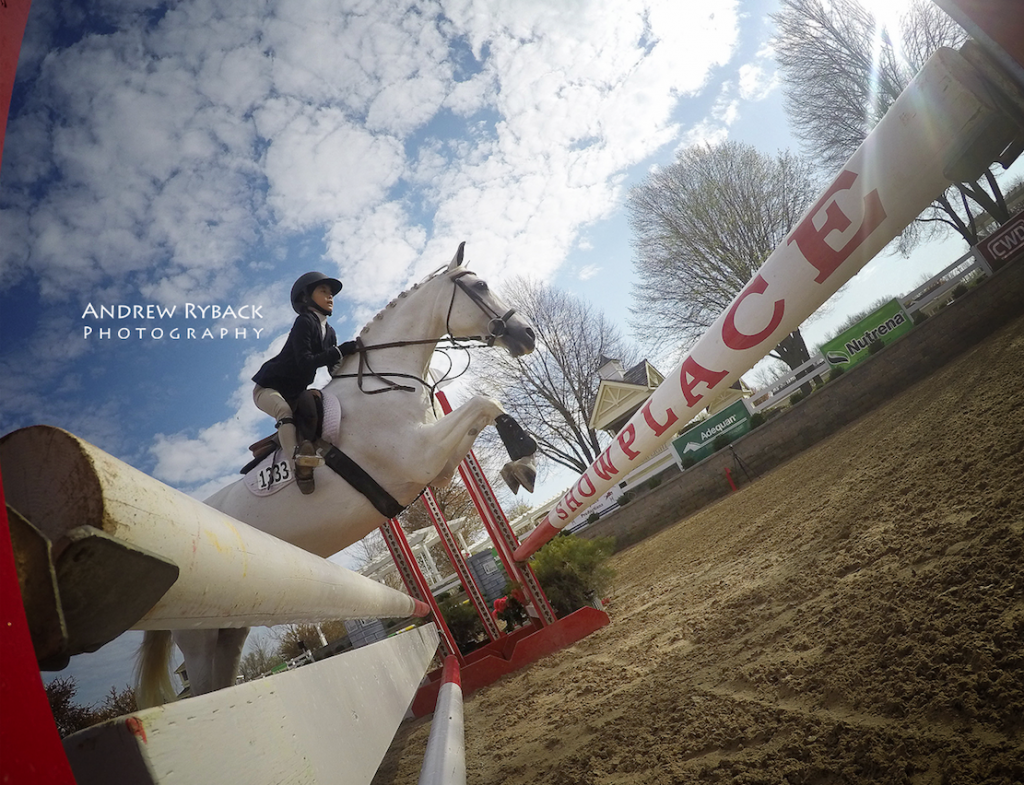
SUBSCRIBE, Rate and Review: The Equine Photographers Podcast
We also encourage your to SUBSCRIBE on iTunes so you never miss an episode. This is also where you can leave a RATING or COMMENT about the episode or the podcast. More comments and ratings helps others find our podcast on iTunes. If you enjoyed the podcast consider leaving a rating and review: Subscribe on iTunes Click HERE
Also, please use the SHARE buttons at the bottom of the page to share The Equine Photographers Podcast with other equine photographers that you may know.
The post 20 : Andrew & Stacy Ryback – Hunter/Jumper show photography & portraits – PODCAST appeared first on Equine Photographers Podcast.
25 April 2016, 4:02 pm - 37 minutes 46 seconds19 : Jon McCarthy – Saddle horse show photography & learning from the best – PODCAST
I contacted Jon because I saw some of his farm call images. As I explored his website, I found out that his main gig is Saddle Horse Shows from all over the country. I’ve been wanting to have some interviews with show photographers, so I was delighted when Jon was willing to come on the podcast and tell us about his history with horses and his equine photography business.

What makes a great horse show photographer?
How do you learn to run a horse show business?
These are some of the questions that we answered in today’s podcast with Jon McCarthy of Jon McCarthy Photography.
SHOW NOTES:
Website: www.jonmccarthyphoto.com
Facebook Page: https://www.facebook.com/Jon-McCarthy-Photography

John started college as a pre-med major, then discovered horses. Shortly he transferred to William Woods University for an Equine education. It was there that he started to experiment with photography.
Jon got the photography bug in College after getting the horse bug
He had lots of subject available to photography. Then he started shooting some of the lessons, people working with their horses, etc. This started him on the path toward horse show photography.
Learning what was expected from various breeds and disciplines is important
This is also when he was able to learn about various breeds and what was needed and expected for “best images” for the breed or discipline.
He graduated with a degree in equestrian science with the intention of being a trainer. He got a job at a large Morgan operation.

Finding a mentor in the show world
He went to show and introduced himself to the top name in Morgan horse show photography. In talking to him, it became clear that this is the direction that he wanted to go in. He was invited to help out with an upcoming show. He was able to work for him on some shows and still to this day he is Jon’s go to person for learning and building his business. Jon started booking some larger shows that were coming in from this mentor when he was unable to take them due to prior bookings etc., he would pass them along to Jon.

Jon does about 26 shows a year at this time. Ideal shows are 100 head or more. Shows used to be huge, but now many shows are multi-breed formats in order to bring in enough horses. Where before there might be hundreds of Morgans, now there might be 60 head Morgans, 30 Saddlebred, and then additional horses of various other breeds.
Reflecting back, his first year he didn’t feel the quality of his images (getting the right shots and timing) was very good. After working with his mentor and shooting at those shows and getting trained and feedback from this great mentor, he improved greatly and was able to get out on his own much better. He still has shows that he does with this mentor every year. They talk business and images and work together to get the best possible products (best images out there) for their show participants.

Jon McCarthy Photography is set up for people to make selections at the shows, but he does not do actual printing at most of the shows he works. There is just too much work getting the images and preparing them so people can make selections. He does all the printing and culling and post production himself. His trailer has selection stations (computers) and he has someone there to help in the process of placing orders while he is out shooting. Between classes, they upload and prepare the images for viewing.
Why does Jon LOVE doing horse show photography?
What makes horse show photography a fun business for you , Jon? He loves the relationships he develops with people all over the country. He loves traveling across the country and exploring. He gets to see so much of the country because of his business and they go on excursions to beautiful places when they have time.
He discusses what it takes to make a living at horse show photography. We talk about his prices and what consumers are purchasing. We discussed publications and dealing with deadlines which is a major part of Saddle horse show photography. Recent changes with the popularity of Facebook were discussed along with meeting the needs and desires of his customers. Digital files for ad requests are uploaded directly to the advertising department of the publications in most cases. We are constantly battling the clock to get adjust and upload the images needed for promotional advertising from these shows, he explains.
SALES
Jon McCarthy Photography has print packages, digital uploads for advertising, and Facebook image digital low resolution web files which are very popular right now. He tries to maintain a 4 week turn around on print production and people who want the Facebook files, of course want them ASAP. Jon also works with his customers who have quick turn-around deadlines that have to be met to satisfy their urgent needs. He does not like to send things off for printing or sub things out and because he wants to see everything before it goes out and he likes having the control. He mentioned that in some cases he may print an image two or three times before it is perfect for his customer and it can be shipped out. The print packages include Facebook files, but many now just buy the Facebook prepped digital files because the love to SHARE from their recent show participation. Social media is substantial and is a significant part of his mix of services and products.
We had a discussion about the people shooting over the rail and how it affects the OFFICIAL PHOTOGRAPHER at shows these days. How do you tell a parent they cannot take pictures of their kid riding in a show? He explained that although he knows some show photographers who have been hit hard with lower sales and they attribute this to over the rail shooters, in his business with publication deadlines and other quick turn needs, he still does well with his shows.
Prints account for 30% of what he sells at the shows. 45% of the sales are high res files for publications and commercial use and the rest are low resolution digital files for sharing on social media.
Farm Call Sessions
Jon tells us about his farm call sessions. He puts out his schedule and people will call and fill in his schedule from time to time with farm sessions in transit or between show commitments. He has a six-horse minimum, but if he is in the area there is no trip charge and travel expenses associated with the farm session.
What would you tell someone who wants to do horse show photography?
Jon recommends that you go out and find someone to who will allow you to work for them. Learn your timing and the ins and outs of the business from someone who is successfully doing the business. Learn the specifics of shooting various breeds and disciplines . It’s important to meet or beat your customer expectations and each breed and discipline has different expectations.
SUBSCRIBE, Rate and Review: The Equine Photographers Podcast
We also encourage your to SUBSCRIBE on iTunes so you never miss an episode. This is also where you can leave a RATING or COMMENT about the episode or the podcast. More comments and ratings helps others find our podcast on iTunes. If you enjoyed the podcast consider leaving a rating and review: Subscribe on iTunes Click HERE
Also, please use the SHARE buttons at the bottom of the page to share The Equine Photographers Podcast with other equine photographers that you may know.
The post 19 : Jon McCarthy – Saddle horse show photography & learning from the best – PODCAST appeared first on Equine Photographers Podcast.
14 April 2016, 4:07 pm - 47 minutes 12 seconds18 : Kirstie Marie Photography – The concept of Beta and Outsourcing – PODCAST
A Texas portrait equine photographer
When I was exploring for new people to interview, I came across Kirstie Marie Photography in Texas. I put off calling her because I had just interviewed another photographer from Texas, so I signed up for the Kirstie Marie email list. Once or twice a week I have been getting samples of beautiful horse and rider portrait sessions she is having. The emails are very graphically interesting and personally inviting and you are left with wanting more. It was time to interview Kirstie of Kirstie Marie photography.
Filling a void and knowing what you would want as a consumer

I expected to be talking to someone who had been doing equine photography for a very long time, but I will call Kirstie a relatively new photographer on the scene since she picked up her first digital camera in 2012. Then as she was planning her wedding she decided that she would pick up a Contact 645 roll film camera and after a year of practice in an area felt a need to fill, portraits of riders with their horses, she created her price list and web site and launched.
The importance of not launch when you are in “Beta”
During that first year before she charged anyone for her services, she considered that her business was in “beta” and she developed her portfolio and abilities until she felt she was ready. In our interview she explains how and WHY she does things the way she does and why as photographers we should be clients of other photographers. I think you will find the interview very informative and inspiring. Kirstie is very business savvy which shows in all the choices she makes relative to her branding, website, and marketing that she does with her valued customers.

https://www.instagram.com/kirstieeemarie/
She started with dressage lessons at 3. You can see her history with horses on her website.
SHOW NOTES:
Kirstie picked up a camera in 2012 while in college and planning her wedding. She started with digital, then picked up a Contact 645 film camera (shoots 120 and 200 roll film). Using her own money she practiced for a year shooting film and developing her product and portfolio before telling people she was going to charge them for her services. She was making sure she had something professional. She did not want to put something out there in “beta”.
Medium format film images included in every shoot
She still shoots film some on each session (not 35mm, but 120 and 220 roll film). She has nice digital gear now as well and edits the digital images to look like the film images that come back from her pro film lab. Now she has a Hasselblad as her film camera and is very pleased with its very fast and accurate automatic focus.

Professional and part-time and the importance of outsourcing
Kirstie has a full-time career and her photography business is part-time mostly on weekends. She loves both so she has no plan on changing the current mix any time soon. She likes two to 4 sessions per month, but is a softy and when people call with urgent requests she tries to work them into her schedule. She explained that one time she had a very over packed period of 6 weeks with 16 sessions. Yikes!
About being a customer of photographers
Kirstie is a customer of photographers to learn more about how they run their businesses and to explore how she feels about the experience with other photographers and determine how to improve the experience of her own clients. Kirstie feels strongly that you should put yourself in your client’s perspective as a customer of photography. I would have to agree with her and would encourage you to do the same. Spend some money and have some portraits made from time to time, see how the experience feels and learn.

She booked several photographers who did not sell digital files. It was a great disappointment and very frustrating to her because all she wanted was the digital files, so now she builds her own business as “all-inclusive packages” with additional add-ons for those who want them. But, when we talk about packages, we are not speaking about $295.00
All inclusive packages and what that means
All inclusive packages at Kirstie Marie Photography start at $1495.00. She talks about how she markets to a specific target audience and admits that she is in the heart of horse country. She explains more about what “all-inclusive” means. Here is a page from her website that explains in general terms what is included in her packages. She has this starting package and includes two more packages which focus on adding large prints, canvases or wall collections and custom albums to the list of included items.

Mentor/Teaching website
http://kmplearn.com
Kirstie is very business savvy as I mentioned earlier and she also has a mentoring/teaching websites for photographers with a free email letter list as well. I would encourage you to join her list and consider purchasing some consulting from her if you are starting out or if you want to be top of your game in portrait equine photography.



SUBSCRIBE, Rate and Review: The Equine Photographers Podcast
We also encourage your to SUBSCRIBE on iTunes so you never miss an episode. This is also where you can leave a RATING or COMMENT about the episode or the podcast. More comments and ratings helps others find our podcast on iTunes. If you enjoyed the podcast consider leaving a rating and review: Subscribe on iTunes Click HERE
Also, please use the SHARE buttons at the bottom of the page to share The Equine Photographers Podcast with other equine photographers that you may know.


Thanks from your host Peter DeMott.
The post 18 : Kirstie Marie Photography – The concept of Beta and Outsourcing – PODCAST appeared first on Equine Photographers Podcast.
30 March 2016, 4:43 pm - 36 minutes 51 seconds17 : Anna Smolens – Start-up strategies for equine photography that are working – PODCAST
HELLO, I’M ANNA. A FINE ART EQUINE AND PORTRAIT PHOTOGRAPHER BASED ON THE EASTERN SHORE OF MARYLAND.
How do you gain instant recognition and memorability? After reading about being the purple cow in a marketing book, Anna decided on the name Purple Horse Design. One of the many little points we discuss about Anna’s quick start-up of her equine photography business in Maryland. Lots of energy and enthusiasm and planning and practice have brought her along amazingly fast. Listen to her enthusiasm and ideas and learn from the new kid on the block here on the Equine Photographers Podcast.

I had seen some discussion online about Anna’s Instagram account with over 60,000 followers. People asked, were these all her own images? How old is she? Then looking at her facebook page, she looks to be a teen ager from her profile picture, but instead I found out that she is in her 30s and has a young daughter and up until a recent illness, she has pursued her equine photography business with an amazing amount of energy and creativity. She only started in 2013.
You can hear the joy she gets from photographing horses and their owners and you can listen today about how she plans and practices each thing before rolling it out to the public. But, even the best planning intentions can not prevent word of mouth advertising from putting the cart before the horse such that she has been playing catchup trying to get her paperwork and other things in order for her business as demand for her services flourished. I hope that you will enjoy this interview with Anna Smolens of Purple Horse Design.
Website: http://purplehorsedesigns.com
Facebook Page: https://www.facebook.com/purplehorsedesigns
Email: purplehorsedesigns@gmail.com
Instagram Account: purplehorsedesigns


SHOW NOTES
Introduction
The horse came first. She started loving horses when she was only 2 or 3 years old. Started lessons at the age of 6. Anna still has the horse she got when she was only 13 years old and still rides him. He is frequently a model for her test shoots or just practice shooting as well.

She managed a horse farm and was a trainer for a time.
A move to the Eastern Shore of Maryland took her away from the horse business into retail for a while.
She has always loved photography too. She had an SLR in high school. Her equipment was ruined when she got run over by an Andalusian stallion and as a poor student she just left photography alone for about 8-9 years. She started a website design business for some extra cash, but it quickly brought her back into photography. She put her web design business aside to start her equine photography business.
Her love of photography is welded to her love of horses and it is what she LOVE, LOVE, LOVES.
She wanted to do things in order, but she has been playing catch-up when she did some practice shoots to build her portfolio and word of mouth spread the news that she was talented and boom, she had a business.

She does some local events and shows. It gains you exposure. She does a local breeding farm and their events as well. She shoots everybody and has a sign-up sheet to get emails. She gets all the emails from the show managers and then she sends out a link to everyone and presents “DEALS” to get the attention of the participants. She has had great response promoting packages or deals.

Private portrait sessions are what she absolutely LOVES and this part of her business is the majority. Mini Sessions at $200 per with 4 participants required, full custom packages starting at $795.00 and go up to $1695.00.
“PLEASE DO NOT STEAL” is right on the images online using Shoot Proof service. Having a “©” across your image means nothing these days, but having that “Please do not steal” on the images makes it clear that if the image is not on my site, it is stolen.
Her Instagram story is next. She has over 60,000 followers. She is creative how she captions the photographs. It was very slow going at the beginning. She decided to HAVE FUN WITH IT. She hash tags with relevant information, but she also says things that are funny and fun. She has 1064 posts and 64,000 followers, but it does not generate a lot of additional business for her.
People LOVE studio portraits of horses. She loves making them. She has a big background and studio lights that she sets up in the indoor arena. She practiced at a local Hanoverian breeding farm’s stallions. Every time they post one of the images from her sessions, the response is amazing.
Anna has had to slow down for a while because of an illness. She is hoping that she will be over with this physical burden by this summer so that she can put her energies back into doing more STUDIO images of horses in her area.


She is regrouping now, changing her priorities, but still wants this to be her career going forward. She has signed up for her first equine photography workshop for this summer. Much of her learning has been through Creative Live and YouTube videos.
SUBSCRIBE, Rate and Review: The Equine Photographers Podcast
We also encourage your to SUBSCRIBE on iTunes so you never miss an episode. This is also where you can leave a RATING or COMMENT about the episode or the podcast. More comments and ratings helps others find our podcast on iTunes. If you enjoyed the podcast consider leaving a rating and review: Subscribe on iTunes Click HERE
Also, please use the SHARE buttons at the bottom of the page to share The Equine Photographers Podcast with other equine photographers that you may know.
Thanks from your host Peter DeMott.
The post 17 : Anna Smolens – Start-up strategies for equine photography that are working – PODCAST appeared first on Equine Photographers Podcast.
23 March 2016, 4:04 am - 33 minutes 46 seconds16 : Tony Stromberg – Spirit Horses & 800,000 and growing Facebook Likes – PODCAST
Where did Tony Stromberg come from to get to where he is now? This is from the About Tony on his website and I would encourage you to go over and read more as this is only the first couple of paragraphs describing his journey.
After successfully spending over 20 years as a high-end advertising photographer in San Francisco, I found myself disenchanted, burned out, and ultimately receiving no nourishment from the work I was doing. On the outside, I had everything anyone would want, but my inner landscape was barren and I began “searching” for my lost spirit.
When horses came into my life in the mid-1990’s, I realized that I had found my teachers, and the connection that I have developed with horses has helped steer my life in a completely different direction. Horses have taught me so much in the time that I have spent with them. They have taught me about the power of authenticity, honestly, and integrity, and they have taught me the true meaning of leadership and relationship. They have also taught me about living in collaboration and community, rather than the model that our society embodies, which is about competition and “getting ahead of the rest”.
In my interview with Tony we go from where he was to where he is now. Horses continue to take him to better places where he has rediscovered things that he had lost in the competitive rush of being everything to everybody as a commercial photographer. Finding horses probably saved him. I hope you will come and enjoy my interview with one of the top 10 equine photographers in the world.
SHOW NOTES
His website: http://tonystromberg.com
His Facebook page: https://www.facebook.com/TonyStrombergPhotography
When I talked with Tony he had 799,900 Likes on Facebook. In the last two weeks it is now well over 808,000 likes. By the time you hear this it may reach 1 million for all I know. People are captivated by his powerful images and want to see more. Listen to hear how this came to be along with the frustrations and benefits of social media.
60 degrees in February in New Mexico (We started with just a little small talk)
Tony started in photography as a commercial advertising photographer in California
For 20+ years Tony had a very successful advertising photography career starting in his 20s. He describes the variety of work he did so successfully during that period. But, it took him down a path where he was losing himself and dealing with depression and despair. He could just about do any photography project for anyone, but there was something missing for him. At that point he didn’t know the difference between a horse and cow, he said.
He was invited by a friend to visit some horses and he started shooting horses as a hobby. He would go and shoot and find a little piece of himself every time.
How did he start into equine photography as a business?
In commercial photography he was spending 20 percent of his time taking pictures and 80 percent was marketing, showing his portfolio and beating the pavement to get in front of important clients. In equine photography it was the other way around. 20 percent of the time is marketing and 80 percent is shooting. He decided to completely close up shop for his California commercial & advertising photography business and started up anew in New Mexico where he had lived for a time in the past. For a while he did some architectural photography for builders in the area, but soon focused only on horses. He describes how his first horse book came about.
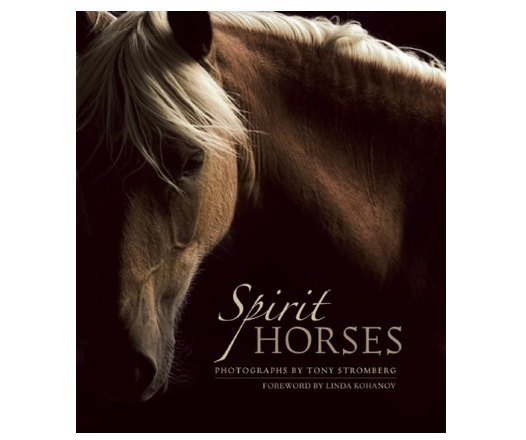
Someone was intrigued with his work and introduced him to her publisher. It was amazing that he walked in with his portfolio and walked out with a book deal. Sales continue with that book through the book distributer.
After the book he started with a calendar company as well and has been doing those for about 10 year now. From there he got with a poster company and that produced some income for the business. All this was getting him noticed in the equine and photography world and people started asking him about doing equine photography workshops. His first low-key workshop was in Santa Fe. He got his feet wet and really enjoyed it so he has been expanding from there. Now he is doing workshops all over the world. This now represents 80 percent of his income from equine photography.
He limits his workshops to 10-12 people and they are for 5 days to a week. He likes keeping them smaller and limits the size of the workshops to be able to offer a better experience to the participants. We breifly talk about the costs in general terms for the participants of his workshops both domestic and over seas . He has people of all ability levels from hobbyists to established pros attending his workshops.
http://tonystromberg.com/workshops/
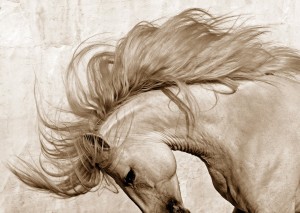

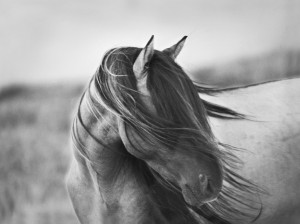
What does a workshop look like? We have a discussion of how the workshops go. He keeps them relaxed and low key so people are not burned out at the end of the week. He sets up one major shoot each day. They have breakfast together and work on their images in the afternoons.
What about Stock photography?
Tony ALMOST signed with a stock agency, but backed out of that deal and never pursued it after that. He had sent out a note to several photographers and found that it might have trapped his images for several years and then not worked out that well anyway. Many photographers have tied up their entire portfolios and been hurt by stock photography agencies. He has done some stock work, but very limited and nothing that would tie up his images in an agency.
Art prints and galleries
Tony has worked with various galleries over the years, but now he only has his work with one gallery. Right now he just had his website completely redesigned to sell fine art prints and his workshops. It is quite beautiful and very easy to navigate by my estimation. He has no idea how this is going to work out at this time. As we spoke he mentioned that he will be announcing the new website on his Facebook page in the next day or two. The website builder need just a couple more days to tweak a few things before he should put it out there.
799,900 LIKES
Believe it or not Tony has only been on Facebook for about 3 years. He started with a paid ad, “LIKE Photography, Like Horses? Click here” or something like that he said. At one point he hired a group for a little while and things were moving along nicely so he stopped that. Then it started to take off on its own. At one point it was growing at almost 10,000 likes per week.
He tries to share something on Facebook and social media every week. It might be a pictures from a recent workshop or it might even be a group shot of the photographers who participated. Sometimes he will post something for several days in a row. He water marks his images, but he knows that a lot of images are being stolen and used everywhere.
His biggest complaint is artists who paint from his images without permission and then selling his intellectual property as if it was their own creativity. He gets 2-3 or more emails and calls DAILY from artists asking if they can paint from his images. He tells them that he does not do that, but he sees his images everywhere as paintings and drawings for sale. They are in too many place to be able to effectively do anything about it which of course is one of the major frustrations of the internet and social media for an artist today.
Frustrations with social media and benefits
He has mentioned his books around Christmas and he expected to see a big bump in sales, but it was surprising it did not increase as much as he would have expected. We discussed how Facebook has changed and how just a couple of years ago when he had far fewer LIKES, he would get exposure to much greater numbers of people.
Now, even with over 800,000+ likes some posts get exposure to only 10,000 or 20,000 people. He gets a lot of his workshops booked and noted that through the Facebook page and he also gets lots of comments (200 or 300 comments with each photograph posted sometimes). It’s gratifying to him that so many people love his images and tell him so.
A Little Facebook trick
If you put a LINK in the post then the number of people who will see it cuts way down. It could be 1/10th what you might get from posting a pictures alone, but if he posts a picture then puts a link in the comments it reaches many more people. Facebook wants their money for you to post links. This is just one little trick he discovered recently.
Being with horses has mirrored back to him and taught him and helped him grow as a person. In the advertising work, he had lost touch who he was, and horses have helped him to find himself. Tony owns 4 horses. He rides a very little bit. He wife also rides a little bit. He sees his horses as more like family members and likes to “hang out” with them.
Thanks Tony for letting me interview you about your work. I much appreciate being able to talk with you and share this with the listeners here at the Equine Photographers Podcast.
Top ten equine photographers in the world
Oh Wait, I called him back to ask about being listed as one of the top ten equine photographers in the world. He was noted first in the list in the post on a website called Topteny and the congratulations started pouring in. It made his day when he found out about it and when the comments started rolling in on Facebook, in emails, and so on…. 300 or 400 comments in the first day or so. He really did not know much about how this selection of the top ten equine photographers in the world came to be and how he or the other photographers listed were judged, but it was fun none the less.
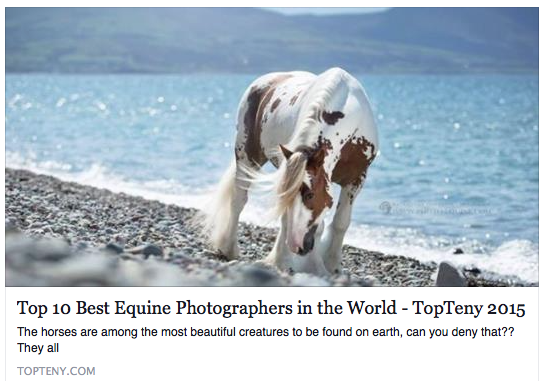
http://www.topteny.com/top-10-best-equine-photographers-in-the-world/
Tony’s new book
Because of the journey that horses have helped him with in his mind and soul, he has collaborated with people who work with horses as a therapy for people. Look for Tony’s new book, “Horse Medicine”.

SUBSCRIBE, Rate and Review: The Equine Photographers Podcast
We also encourage your to SUBSCRIBE on iTunes so you never miss an episode. This is also where you can leave a RATING or COMMENT about the episode or the podcast. More comments and ratings helps others find our podcast on iTunes. If you enjoyed the podcast consider leaving a rating and review: Subscribe on iTunes Click HERE
Also, please use the SHARE buttons at the bottom of the page to share The Equine Photographers Podcast with other equine photographers that you may know.
Thanks from your host Peter DeMott.
The post 16 : Tony Stromberg – Spirit Horses & 800,000 and growing Facebook Likes – PODCAST appeared first on Equine Photographers Podcast.
26 February 2016, 3:57 am - 46 minutes 54 seconds15 : Judy Bosco – Balancing equine photography with work, family, husband & health – PODCAST
Judy Bosco has been an equine photographer for a long time, however she has stayed part-time balancing a full-time job, family, husband and recently other life challenges to continue to pursue her love for photography and horses. Listen and hear about her story on The Equine Photographers Podcast.
SHOW NOTES
Judy’s website: http://www.judybosco.smugmug.com
Judy’s Facebook page: https://www.facebook.com/PhotographybyJudithMBosco
When did she start to love horses?
Her parents knew that she was horse crazy so they gave her horseback riding lessons when she was 9 years old for a summer. After that a friend of hers who had horses stabled at the same barn and she helped clean stalls, and they rode a lot together. She did lease a horse for one summer, but has never owned her own horse.
Where did the photography come in?
She met her future husband at a new local camera store that had opened in the area. She bought a Yashica film 35mm camera and some lenses and started to take black and white pictures. She would study the horse magazines to determine if her images were any good and how she could improve them.
Practice, practice, practice is how Judy learned back then. She shot in black and white and the “guy at the camera store helped her to process her first bunch of rolls of film.” She focused on hunter/jumper and english riding. He taught her to process her own black and white images.
She also acquired a Bronco 645 which uses 120 and 220 roll film. From there she did lots of small shows on spec, but today shooting on spec does not work to well.
She still does several hunter pace events and still enjoys those the most. In the film days, she would send her daughter to have film processed and bring them back to sell at the events.

She used to do a lot of horse shows then, but things have changed quite a bit now. There are a lot fewer shows these days, but today everything is digital and there are lots of “photographers” shooting all the shows. At the same time she sometimes gets complaints that there was not a photographer at a show. However if the participants are unwilling to support the photographers when they do come, what would they expect to happen? After shooting a couple of shows with few sales photographers give up and move on to other types of events.

Now, she does everything online using Smugmug. She still have several hunter pace events that she does. She puts up a booth with samples and business cards and there are information cards in the rider packets.
Sign-up here and win an 8×10 from today’s event
She gives away an 8×10 at each event or show she does. This is a way to gather up lots of email addresses where she can notify them when the event gallery is available for viewing and purchase. At the hunter pace events is that there are people who don’t do other types of shows and they may not have any pictures of themselves with their horses yet. This means lots of new sales at these events that can also lead to other business.

Now she is trying to figure out how to sell digital files effectively and profitably. Many just want the digital files today. Sometimes she sells a bunch of files on a thumb drive for people who want a lot of files.
Conformation pictures to sell or promote a horse
Discussion of the cell phone pictures that people are using today to promote the sale of their horses. They wonder why there are no buyers or why they have to lower their price so much to sell their horse, however the horse does not look good with a large head a very tiny bottom and does not look good.
EPnet workshops
I’ve been to workshops in 2005, 2006, 2007, 2008, 2009, all the way through 2013 she explained. She loved what she learned from Betty Cooper’s workshop one year learning a lot about posing horses with their people. Hands on learning seems so much more effective to learn things about posing and getting horses to look great rather than just various online general photography learning opportunities.
Learning how to turn the horse’s head or pose the person with the horse can be learned so much better when you are actually seeing it done before your eyes. Judy recommends going to equine photography workshops whenever possible. As you can see, she has attended a few.

Family and health issues have slowed things down a bit lately
She cared for her mom until she passed in 2014. Then she had a kidney stone and an infection. Then her heart was feeling odd. At a big show her blood pressure and pulse tanked and were very low. She ended up getting a pacemaker and feels great now. Now she has more energy and is looking to do more shooting in coming months. Taking care of yourself is important.
Trying out Team Penning & cutting shows recently
My D800 has been great for this indoor event of a different nature. It’s action like hunter pace and hunter/jumper, but it is something I have not done before with new challenges. It was lots of fun and she had some good sales. Trying something completely new and challenging can be a great way to learn and grow.
SUBSCRIBE, Rate and Review: The Equine Photographers Podcast
We also encourage your to SUBSCRIBE on iTunes so you never miss an episode. This is also where you can leave a RATING or COMMENT about the episode or the podcast. More comments and ratings helps others find our podcast on iTunes. If you enjoyed the podcast consider leaving a rating and review: Subscribe on iTunes Click HERE
Also, please use the SHARE buttons at the bottom of the page to share The Equine Photographers Podcast with other equine photographers that you may know.
Thanks from your host Peter DeMott.
The post 15 : Judy Bosco – Balancing equine photography with work, family, husband & health – PODCAST appeared first on Equine Photographers Podcast.
14 February 2016, 9:39 pm - More Episodes? Get the App
Your feedback is valuable to us. Should you encounter any bugs, glitches, lack of functionality or other problems, please email us on hi@moon.fm or join Moon.FM Telegram Group where you can talk directly to the dev team who are happy to answer any queries.


 Equine Business Builders
Equine Business Builders
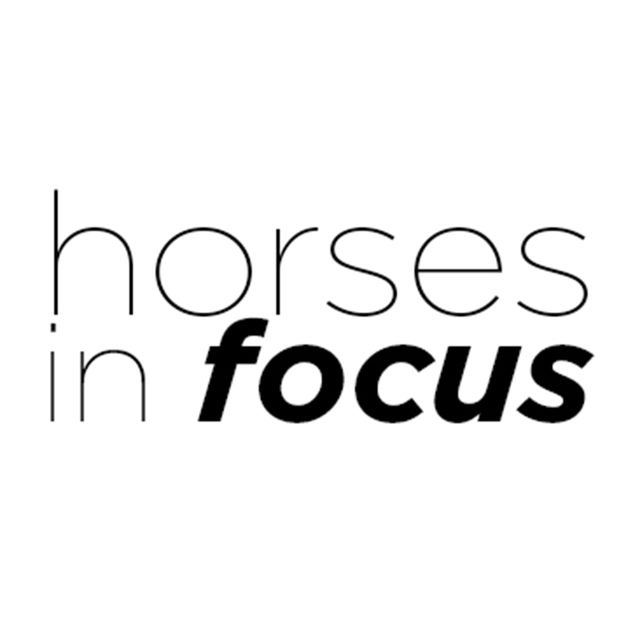 Horses in Focus: An Equine Photography Podcast
Horses in Focus: An Equine Photography Podcast
 Reining Horse: Reining TV for Wired Equestrians
Reining Horse: Reining TV for Wired Equestrians
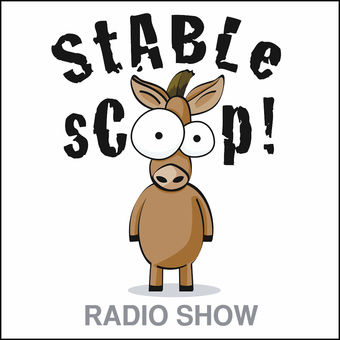 The Stable Scoop Radio Show
The Stable Scoop Radio Show
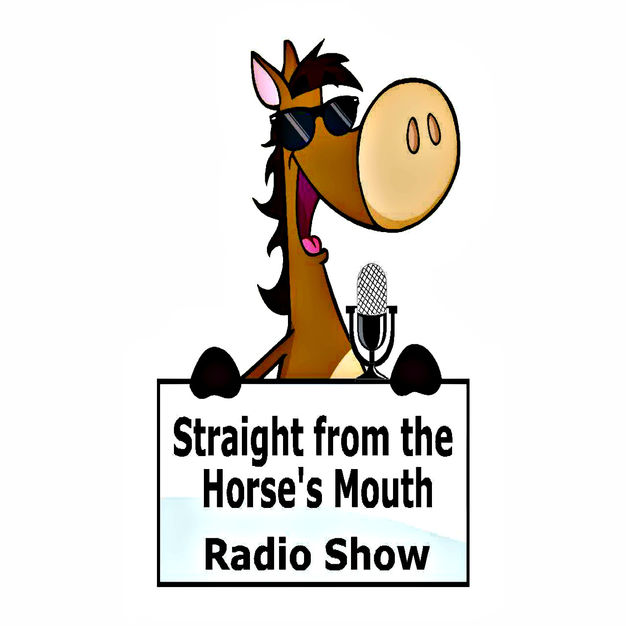 Straight From the Horse's Mouth Radio Show|Horse Radio|Horse Podcast|Creative Equestrians|Equestrian Mindset Coaches|Equine A
Straight From the Horse's Mouth Radio Show|Horse Radio|Horse Podcast|Creative Equestrians|Equestrian Mindset Coaches|Equine A